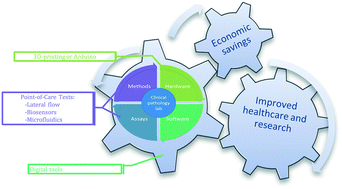Use of some cost-effective technologies for a routine clinical pathology laboratory
Abstract
Classically, the need for highly sophisticated instruments with important economic costs has been a major limiting factor for clinical pathology laboratories, especially in developing countries. With the aim of making clinical pathology more accessible, a wide variety of free or economical technologies have been developed worldwide in the last few years. 3D printing and Arduino approaches can provide up to 94% economical savings in hardware and instrumentation in comparison to commercial alternatives. The vast selection of point-of-care-tests (POCT) currently available also limits the need for specific instruments or personnel, as they can be used almost anywhere and by anyone. Lastly, there are dozens of free and libre digital tools available in health informatics. This review provides an overview of the state-of-the-art on cost-effective alternatives with applications in routine clinical pathology laboratories. In this context, a variety of technologies including 3D printing and Arduino, lateral flow assays, plasmonic biosensors, and microfluidics, as well as laboratory information systems, are discussed. This review aims to serve as an introduction to different technologies that can make clinical pathology more accessible and, therefore, contribute to achieve universal health coverage.

- This article is part of the themed collections: #RSCPoster Conference and Lab on a Chip HOT Articles 2021


 Please wait while we load your content...
Please wait while we load your content...